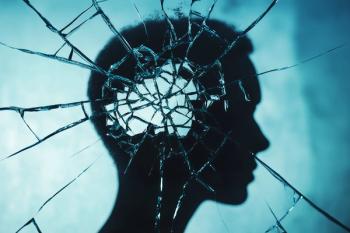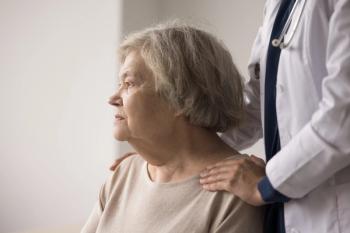
- Vol 32 No 7
- Volume 32
- Issue 7
Research That Can Change Clinical Practice in Psychotic Disorders
The need to stay up-to-date with the most current evidence-based information is becoming harder than ever. For this reason, the authors identify and evaluate published research that may have a direct bearing on clinical practice.
Because psychiatrists need to stay up-to-date with the most current evidence-based information is becoming harder than ever, we attempted to identify and evaluate published research that may have a direct bearing on clinical practice. We used the following process:
• Literature published between July 1, 2013, and June 30, 2014, was searched for relevant study findings
• Psychiatric groups and colleagues were asked which research published July 1, 2013, through June 30, 2014, had had the greatest impact on the clinical practice of psychiatry
• Post-publication reviews and commentaries in peer-reviewed journals helped assess the final choices
The articles were chosen on the basis of the clinical relevance, applicability, and quality of the research.
Here we present data from 3 meta- analyses and 2 double-blind, randomized, placebo-controlled trials.
Psychological treatments
Psychotherapy remains an important but underused modality with inconclusive relative differences. To examine the relative efficacy of psychotherapy for symptom improvement, a
For all symptom improvement, CBT was most and befriending was least effective (Hedges’ g = 0.16; 95% CI, 0.04, 0.28, and Hedges’ g = −0.37; 95% CI, −0.60, −0.13, respectively). CBT had significant but small benefits for positive symptoms compared with other treatments; these benefits remained after excluding biased trials but lost significance after sensitivity analyses for researcher allegiance. Social skills training provided mild to moderate benefits over other therapies (Hedges’ g = 0.27; 95% CI, 0.01, 0.53) for negative symptom improvement; the benefits remained after excluding biased studies. On head-to-head comparison, CBT was statistically superior to supportive counseling for positive symptoms (Hedges’ g = 0.23; 95% CI, 0.01, 0.44). Among CBT subtypes, generic CBT was more effective than coping enhancement.
Repetitive transcranial magnetic stimulation
Quality-of-life measures along with other functional outcomes in schizophrenia are largely predicted by negative symptom resolution; however, treatment of negative symptoms continues to be a challenge, even with atypical antipsychotics. To fill this gap, other treatment alternatives have been investigated. Among them, repetitive transcranial magnetic stimulation (rTMS) has been found to provide symptomatic relief. This was examined in a
In half of the studies, the participants were receiving typical antipsychotics. The duration of illness among the participants was 5.3 to 22.7 years. Participants received 5 to 20 sessions of rTMS at 1 to 20 Hz with 80% to 110% motor threshold. Most studies used the left dorsolateral prefrontal cortex as the treatment site; SANS (Scale for the Assessment of Negative Symptoms) and PANSS (Positive and Negative Syndrome Scale) scores were used as outcome measures.
On pre-post rTMS treatment outcomes, active rTMS yielded a moderate effect on negative symptoms (Cohen’s d = 0.62; 95% CI, 0.22, 1.02); however, pooled analysis of the open-label studies failed to show any significant difference. The pre-post sham treatment difference, indicative of placebo effect, also showed small effect (Cohen’s d = 0.39; 95% CI, 0.15, 0.67). Compared with sham treatments, rTMS induced moderate negative symptom improvement (Cohen’s d = 0.53; 95% CI, 0.19, 0.87). In addition, rTMS treatment was found to have statistically significant effect when the following moderators were in place: shorter duration of illness, longer treatment duration, 10-Hz frequency, left dorsolateral prefrontal cortex treatment site, 110% motor threshold intensity, and a higher baseline PANSS score.
Relative efficacy of oral antipsychotic monotherapy
Inconclusive efficacy hierarchy of oral antipsychotic monotherapy prompted a pooled analysis of 212 blinded, randomized, controlled trials published from 1955 to 2012. The
All the medications were statistically superior to placebo for symptom reduction. Clozapine was most effective for providing symptom relief (SMD [standard mean difference] = −0.88; 95% CrI [credible interval], −1.03, −0.73); besides being most effective, haloperidol (SMD = −0.45) also outperformed quetiapine (SMD = −0.44), aripiprazole (SMD = −0.43), and ziprasidone (SMD = −0.39). In addition, chlorpromazine (SMD = −0.38) was found to be better than lurasidone (SMD = −0.33) and iloperidone (SMD = −0.33).
The all-cause discontinuation was highest for haloperidol, whereas clozapine and olanzapine were among the most acceptable antipsychotics. Although tolerable, olanzapine and clozapine caused the most weight gain; haloperidol, ziprasidone, and lurasidone did not differ statistically from placebo in causing weight gain. Haloperidol caused the most extrapyramidal adverse effects, while clozapine produced fewer adverse effects than all medications and placebo. Paliperidone was associated with the highest prolactin elevation followed by risperidone, whereas quetiapine and aripiprazole did not differ from placebo. All medications except lurasidone, aripiprazole, paliperidone, and asenapine caused QTc prolongation. Also, clozapine and chlorpromazine were the most sedating, whereas iloperidone and paliperidone were found to be similar to placebo (Table).
Melatonin for antipsychotic-induced metabolic adverse effects
Melatonin, commonly used as a sleep-promoting aid, was examined in a single-center,
Intravenous sodium nitroprusside
A double-blind, randomized,
The sodium nitroprusside group showed statistically significant improvement on the total BPRS-18 score from the second hour of the infusion until the fourth week of observation. Significant improvement on the BPRS-18 score was noted on the anxiety-depression and thinking disorder subscales from the second and third hour of infusion until the second and fourth weeks of the observation period.
Other significant changes were found on withdrawal-retardation (days 2 through 14) and activation (days 1 through 7) subscales. Similar gains were observed on PANSS (from the third hour of infusion until the fourth week of observation). Furthermore, sodium nitroprusside did not differ from placebo on physiological parameters and the AIMS (Abnormal Involuntary Movement Scale). Other desirable effects included fewer number of medications or dose changes after 1 week.
Conclusion
Schizophrenia, as a major cause of disability-adjusted life years, continues to be a treatment challenge. The results of these meta-analyses and experimental studies provide understanding of relative efficacies of established modalities and emerging effective treatments. Psychotherapy, in particular CBT and social skills training, may help in achieving better outcomes along with standard medical management. Although the relative differences were clinically small with indication of publication bias and heterogeneity, this meta-analysis yielded evidence for adopting a multimodal approach.
rTMS appeared to be superior in combating the constellation of negative symptoms that affect functionality in patients with psychotic disorders. Although the meta-analysis did not include patients receiving atypical antipsychotics, rTMS along with an atypical antipsychotic may lead to enhanced symptom relief.
In the comparative efficacy analyses, newer medications, such as lurasidone and iloperidone, did not appear as effective as other, older drugs. This finding leaves a large gap for more effective drug development. Melatonin as an adjunctive treatment appears to be a cost-effective intervention to prevent metabolic adverse effects. Lastly, sodium nitroprusside as a glutamate–nitric oxide–cyclic guanosine monophosphate network modulator may emerge as a safe treatment with rap-id and long-lasting effects, which are certainly desirable for our psychotic patients. However, further research is needed before this find-ing can be translated into clinical application.
Disclosures:
Dr Saeed is Professor and Chairman in the department of psychiatric medicine at the Brody School of Medicine at East Carolina University, Director of the ECU Center for Telepsychiatry and e-Behavioral Health as well as of the North Carolina Statewide Telepsychiatry Program (NC-STeP), and Chief of Psychiatry at the Vidant Medical Center in Greenville, NC. Dr Anand is an Assistant Professor in the department of psychiatry and behavioral medicine at the Brody School of Medicine.
References:
1. Turner DT, van der Gaag M, Karyotaki E, Cuijpers P.
2. Shi C, Yu X, Cheung EF, et al.
3. Leucht S, Cipriani A, Spineli L, et al.
4. Modabbernia A, Heidari P, Soleimani R, et al.
5. Hallak JE, Maia-de-Oliveira JP, Abrao J, et al.
Articles in this issue
over 10 years ago
Cultural Issues in Treating Geriatric Patients With Mental Illnessover 10 years ago
Pediatric ADHD and the Cultural Psychotherapeutic Modelover 10 years ago
Cultural Competence and LGBT Issues in Psychiatryover 10 years ago
Contemporary ECT for Depression Part 1: Practice Updateover 10 years ago
Intervention Helps Workers With Depressionover 10 years ago
Immigration and Post-Adolescent Psychology of Young Terroristsover 10 years ago
The 2015 International Congress on Schizophrenia Researchover 10 years ago
Perspectives on College Student Suicideover 10 years ago
A Rational Suicide? Case Consultation and Quiz CommentaryNewsletter
Receive trusted psychiatric news, expert analysis, and clinical insights — subscribe today to support your practice and your patients.













